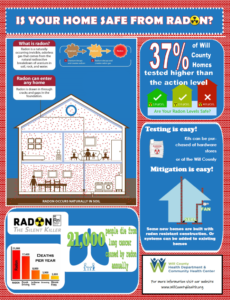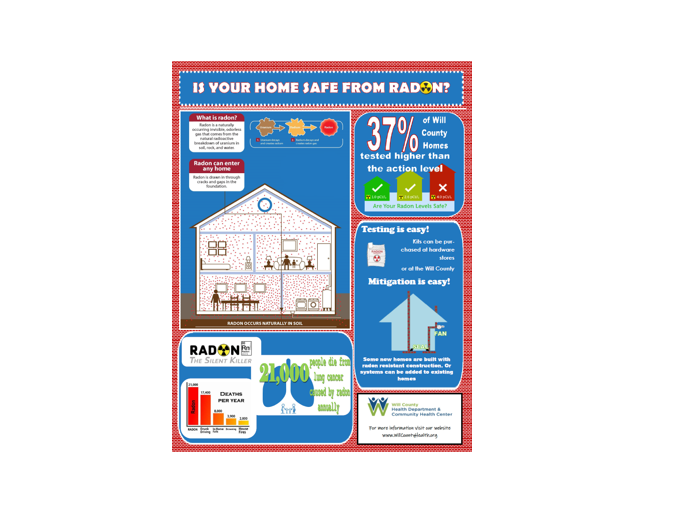We are into January, and while many are thinking about resolutions they have made that may not last long term, another word that begins with “R” is very important to your long term health: RADON.
Each year, January is “National Radon Action Month.” Radon is a colorless, odorless, tasteless gas that can enter your home through the ground and act as a “silent killer.” It is a bi-product of decaying uranium that has existed underground in soil, rock, and water for centuries, going back to the glaciers. The uranium first breaks down into radium, and then radon gas. This gas can enter home through cracks and gaps in the foundation.
Indoor radon gas levels can fluctuate throughout the seasons. However, January is an ideal time to test. Valid tests are conducted with closed house conditions, which is easier during the cold winter months.
The Environmental Protection Agency (EPA) has stated for many years that radon exposure contributes to more deaths than drunk driving; and more than home falls, drownings, and house fires combined. The American Lung Association (ALA) has reported that radon exposure contributes to 21,000 lung cancer deaths per year in the United States. This makes radon the second largest cause of lung cancer behind smoking, and the number one cause of lung cancer among non-smokers.

The above poster from the Will County Health Department provides important information and statistics concerning the danger of radon gas.
Throughout January, you will be seeing electronic billboard reminders that this is the time of year to test your home for radon. The first step to determine your exposure to indoor radon gas is to purchase a test kit from the WCHD (Will County Health Department) or a local home improvement store. The health department sells kits for $8.00. The kit comes with very simple instructions, and the results are sent directly to you. The WCHD Environmental Health division is located at 501 Ella Avenue in Joliet. There are also WCHD Environmental Health offices located at 323 Quadrangle Drive in Bolingbrook, and 5601 W. Manhattan-Monee Road in Monee.
Once you know your exposure situation, the second step is to either breathe a big sigh of relief that your levels are below the EPA action level (four picocuries per liter, 4pCl/L), or contact a local radon mitigation contractor to discuss options for removing radon gas from your home. Some new homes are built with radon resistant construction that, if needed, can be easily converted to an active radon mitigation system. Radon mitigation systems can be added to existing homes. For more information on radon measurement and mitigation go to https://www.epa.gov/radon/publications-about-radon.
For more information on Will County Health Department programs and services, go to http://willcountyhealth.org/.

